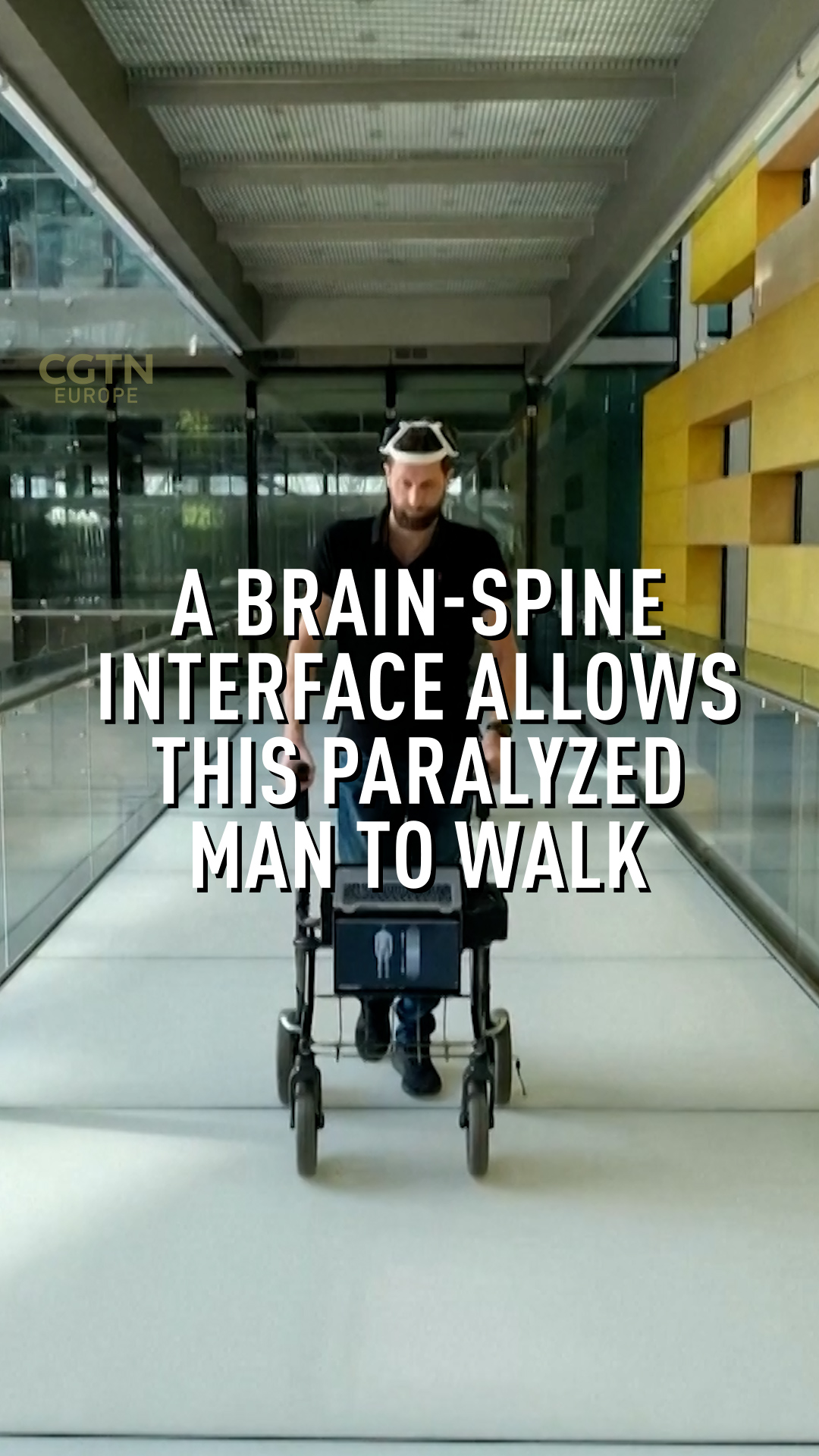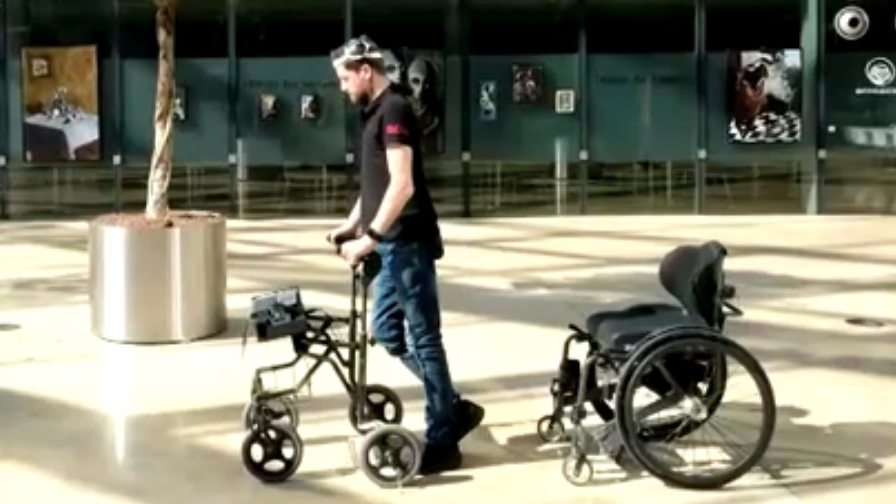00:59

Gert-Jan Oskam is literally a walking miracle. Twelve years ago he was left paralyzed following a cycling accident and thought he would spend the rest of his life in a wheelchair, but in July 2021 he underwent pioneering surgery that has enabled him to walk again.
Electronic implants inserted into his brain wirelessly transmit brain signals to sensors attached to a helmet on his head. These signals are then sent to his legs and feet via another implant in his spine. After just a few weeks of training, Oskam was able to walk again with the aid of a walker.
"Within five to 10 minutes I could control my hips – the brain implant picked up what I was doing with my hip," he said. "So that was like the best outcome, I think for everyone.
READ MORE
Study finds climate change may cost Germany $1 trillion by 2050
Climate change linked to avalanche increase
Spain drought threatens massive job losses
"I can really build functional things from it – as an example, I've been training for 10 years to try and stand up with a friend to have a beer (and now I can), and that's something I think people don't realize."

Gert-Jan Oskam has spent the last 12 years in a wheelchair after being paralyzed in a cycling accident, but pioneering surgery has enabled him to walk again with the aid of a walker. /Reuters
Gert-Jan Oskam has spent the last 12 years in a wheelchair after being paralyzed in a cycling accident, but pioneering surgery has enabled him to walk again with the aid of a walker. /Reuters
The development was carried out by Swiss researchers and published in the journal Nature. Professor Jocelyne Bloch of Lausanne University is the neurosurgeon who carried out the operation to insert the implants but says the operation is still at an early research stage and won't be widely available to paralyzed patients for several years.
Speaking to the BBC, she said: "The important thing for us is not just to have a scientific trial, but eventually to give more access to more people with spinal cord injuries who are used to hearing from doctors that they have to get used to the fact that they will never move again."
During normal bodily movements, the brain sends messages to the legs and feet via the spinal cord, but when the cord is damaged, those messages are interrupted, leaving the person unable to walk.
But researchers have developed an algorithm which translates signals from the brain implant into instructions to move leg and foot muscles via a second implant inserted around Oskam's spinal cord – which Bloch intricately attached to the nerve endings related to walking

Oskam is using the technology for an hour, several times per week, to aid with his recuperation. In the future, scientists hope it can be miniaturized and used on all spinal injury patients. /Reuters
Oskam is using the technology for an hour, several times per week, to aid with his recuperation. In the future, scientists hope it can be miniaturized and used on all spinal injury patients. /Reuters
Oskam's walking has been described as slow but smooth and the technology still can't be used by patients on a daily basis. Instead, Oskam uses the technology for roughly an hour, several times per week, as part of his recuperation.
Using the system has improved his muscle strength and enabled improvements in movement when he's not using the technology, which researchers believe could be a sign that it's helping to regrow damaged nerves.
In the future, the aim is to miniaturize the technology and make it available to all patients. Grégoire Courtine of the École Polytechnique Fédérale in Lausanne (EPFL), who led the project, has hailed the treatment's potential.
"Gert-Jan received the implant 10 years after his accident. Imagine when we apply our brain-spine interface a few weeks after the injury. The potential for recovery is tremendous."
Subscribe to Storyboard: A weekly newsletter bringing you the best of CGTN every Friday
Source(s): Reuters